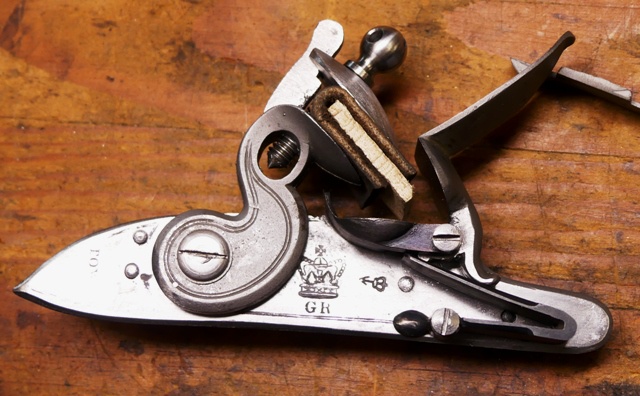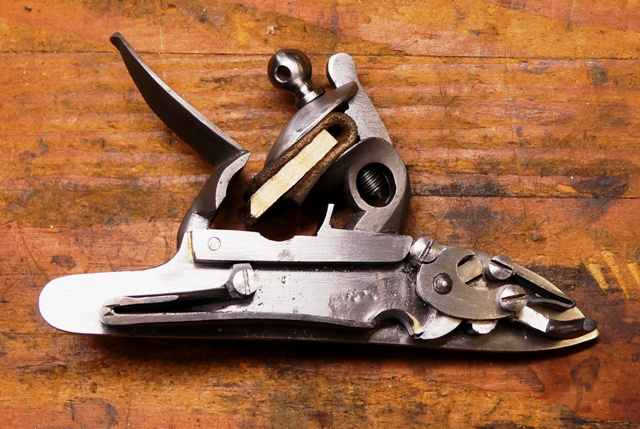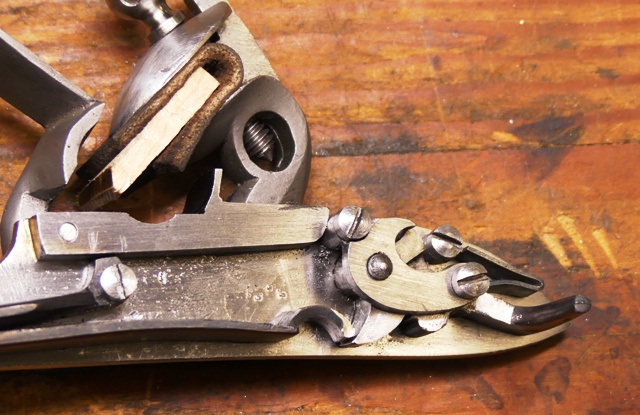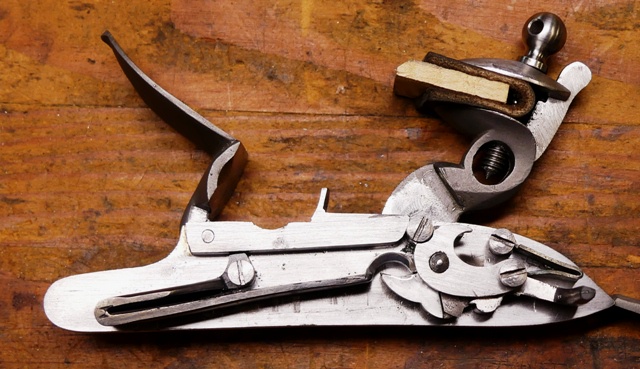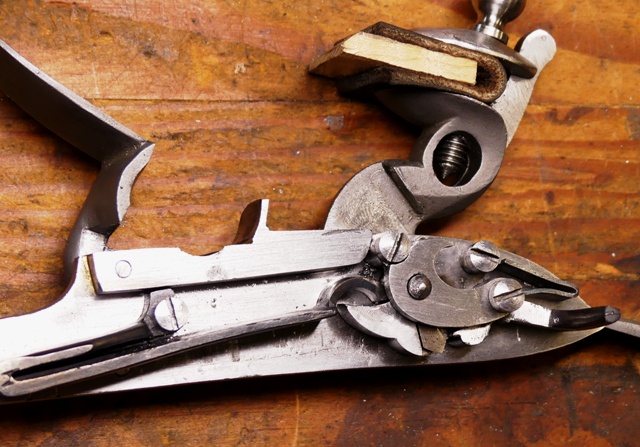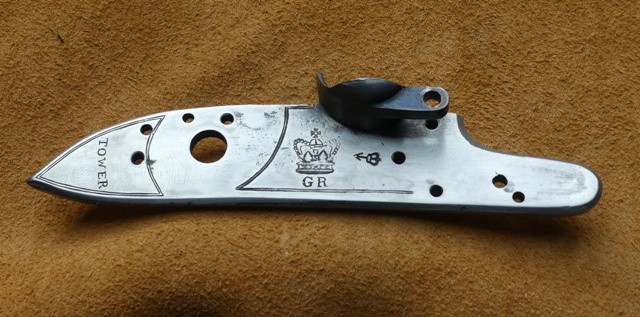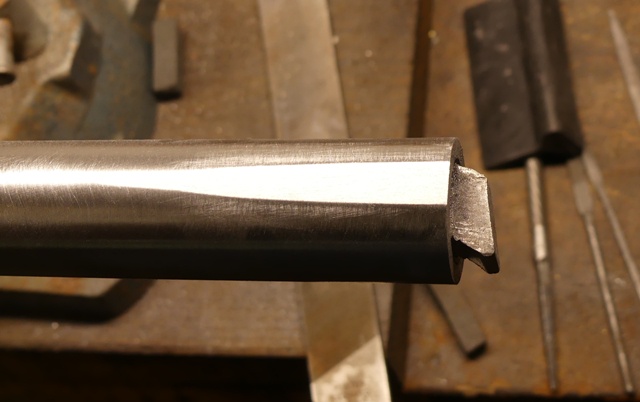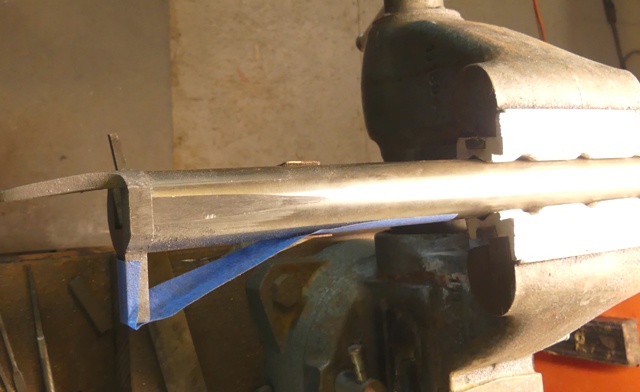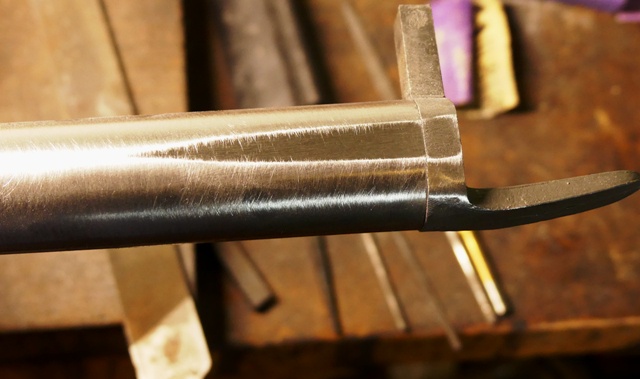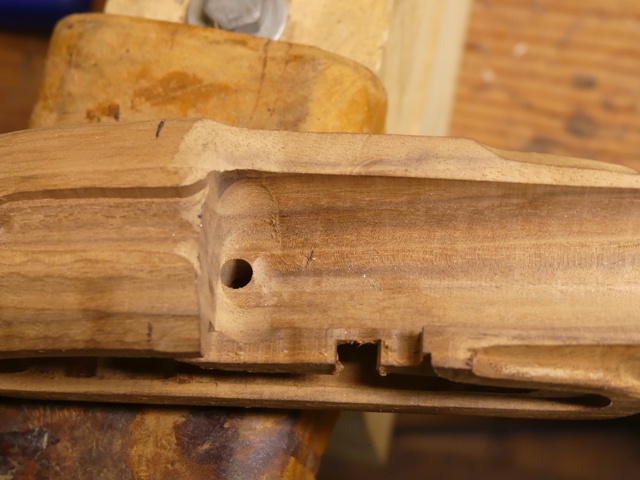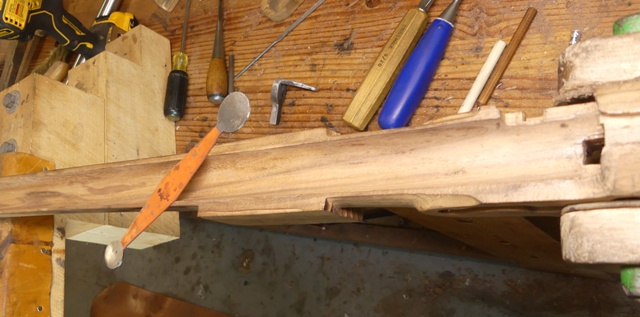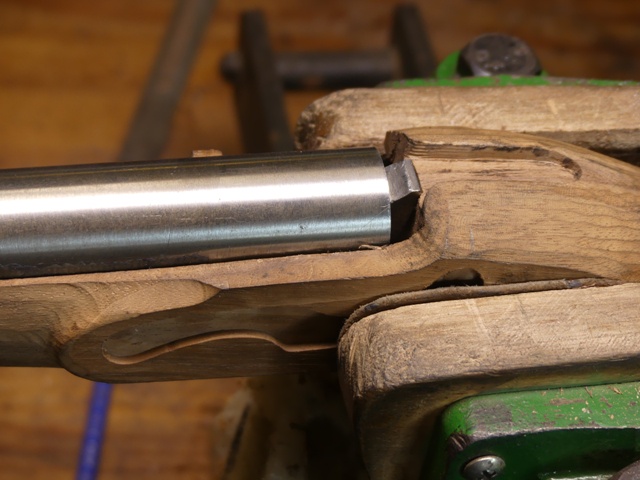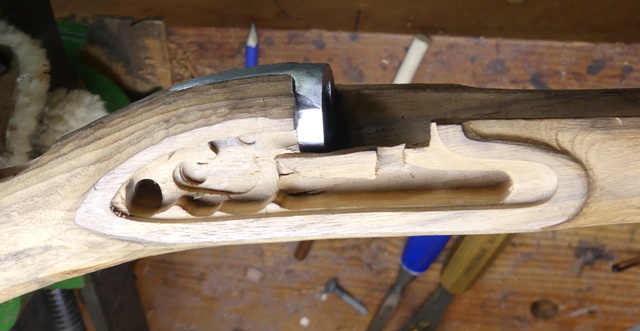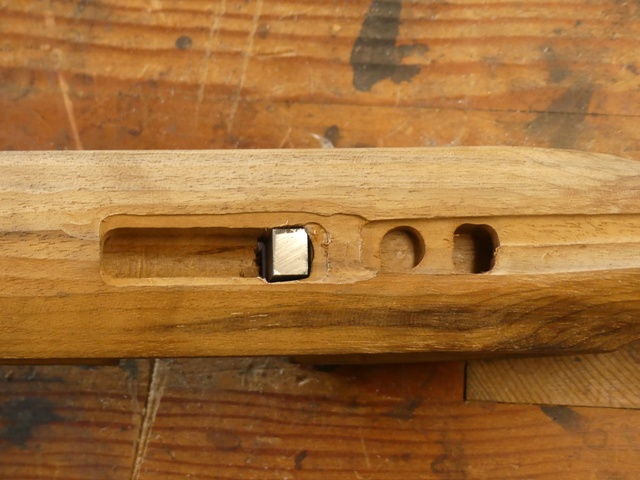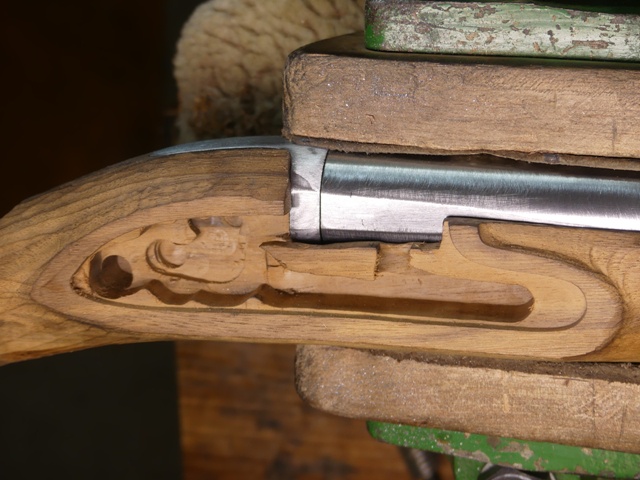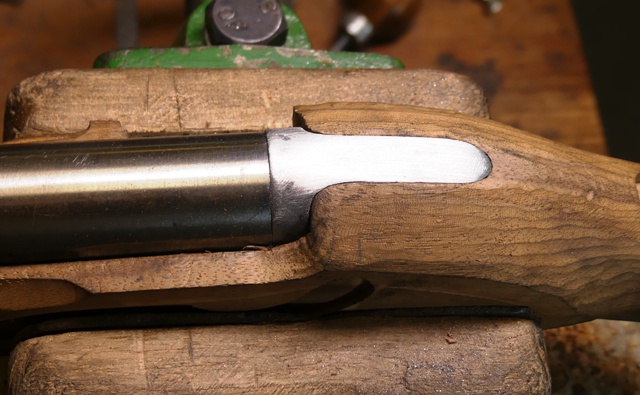- Joined
- Nov 26, 2005
- Messages
- 5,112
- Reaction score
- 10,386
Hi,
I began this project months ago but did not take or post photos. We are so busy it is difficult to keep up with posting projects. Anyway, I am making a Baker rifle from a TRS parts set. It will be the first pattern 1800 rifle including the famous sword bayonet . I never handled and examined an original Baker. I've seen plenty of photos and have excellent references but never one in the hand. I have the plan printed by TRS, which is very helpful. Here is an original rifle but of a later pattern using a different patchbox design.
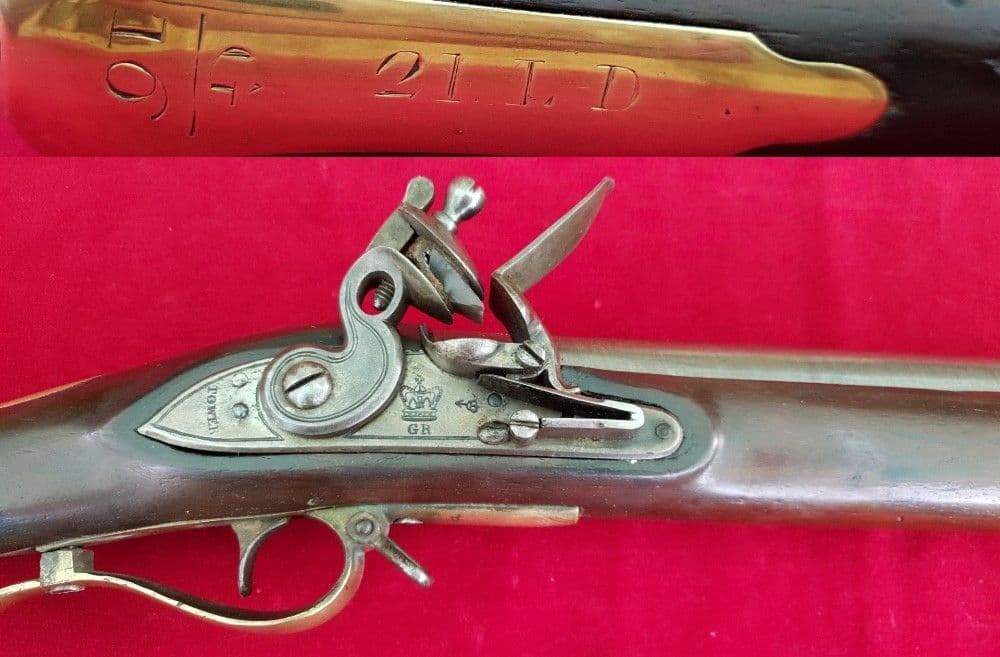
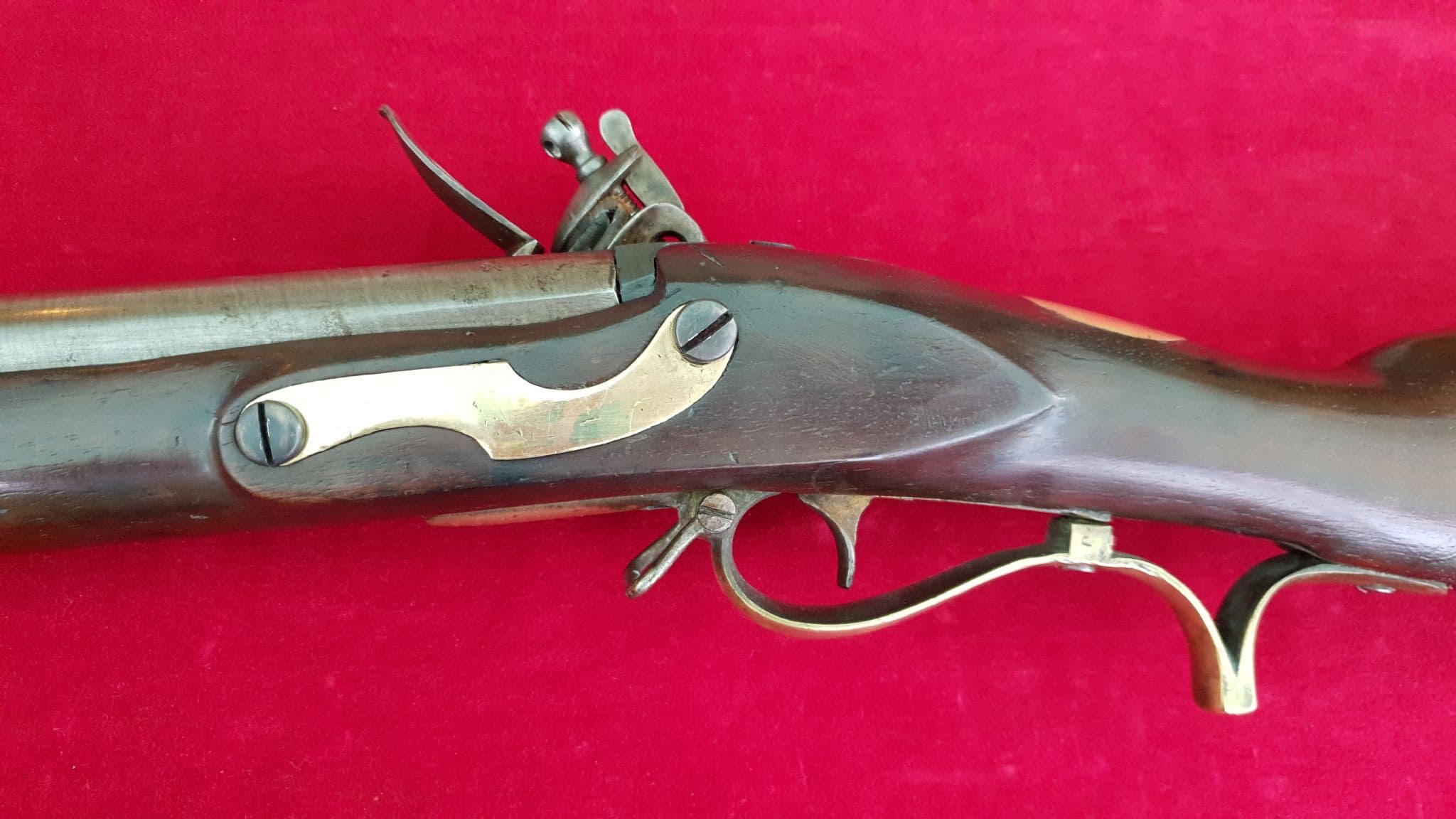
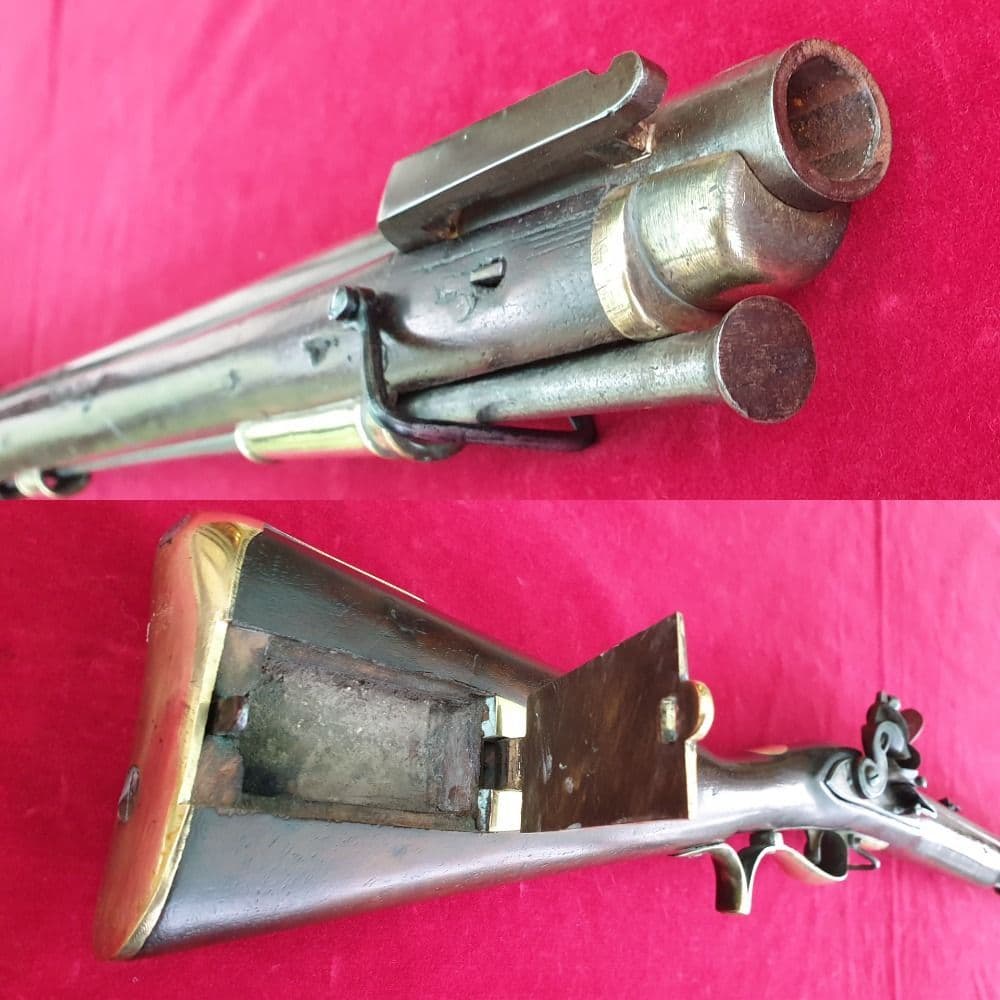

I've been working on this rifle in fits and starts since April but we had too much other work to do and I could not concentrate on it. The TRS pars look good and the stock appears to be English walnut.
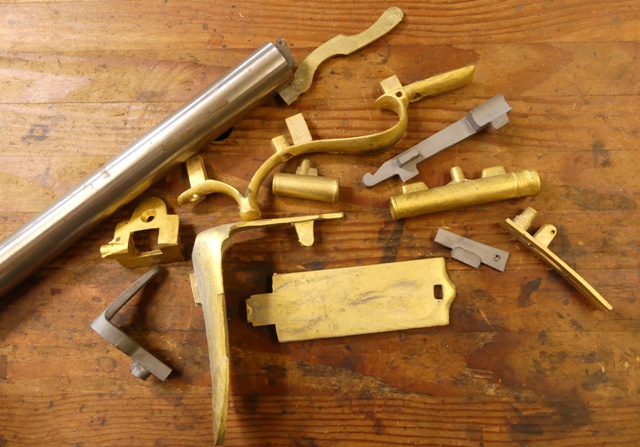
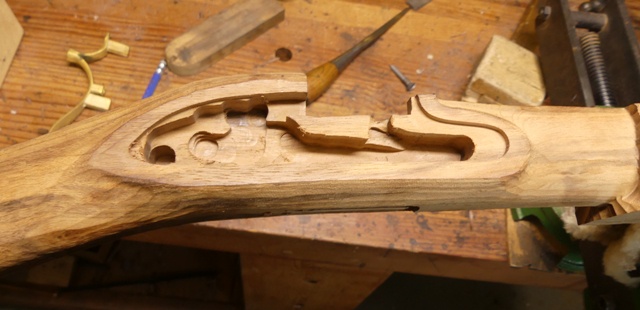
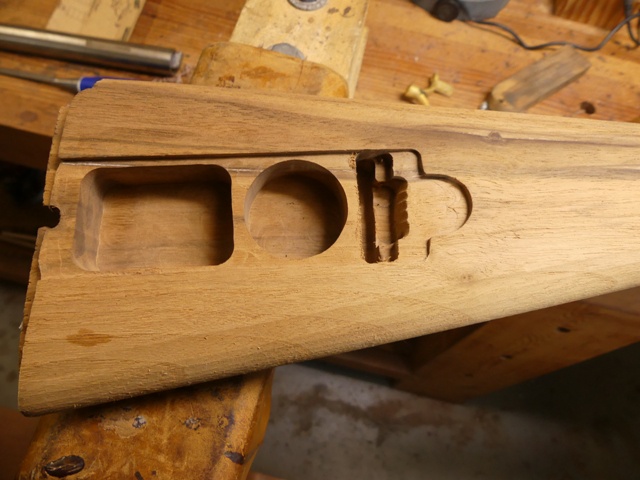
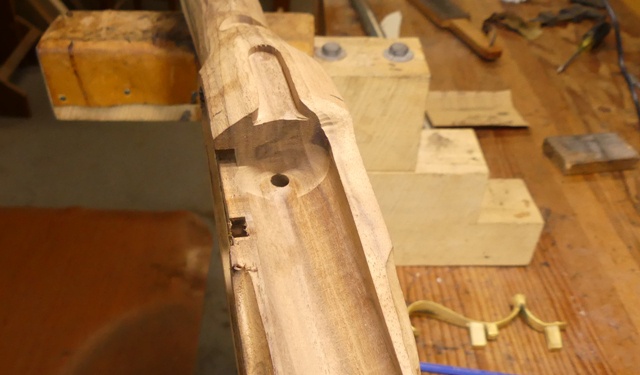
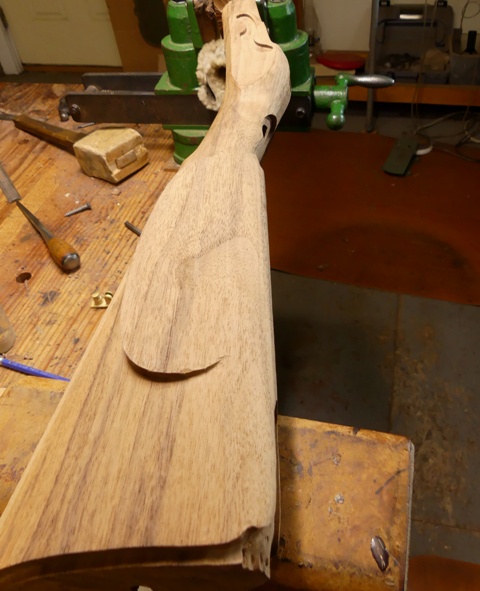
This is a massively strong gun that is almost over engineered in my opinion. My first task was building the lock. A TRS lock parts set looks like this example when you get it (lock for Elliot carbine).
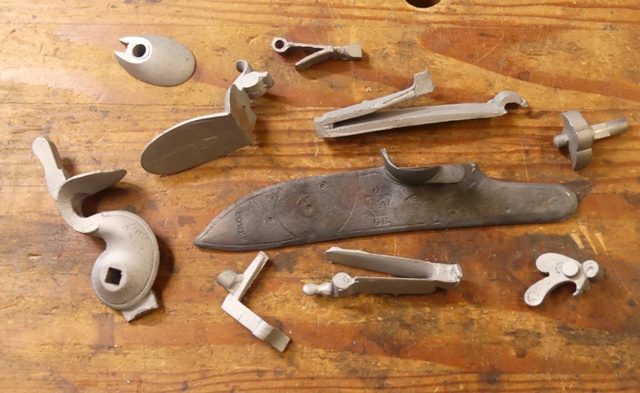
dave
I began this project months ago but did not take or post photos. We are so busy it is difficult to keep up with posting projects. Anyway, I am making a Baker rifle from a TRS parts set. It will be the first pattern 1800 rifle including the famous sword bayonet . I never handled and examined an original Baker. I've seen plenty of photos and have excellent references but never one in the hand. I have the plan printed by TRS, which is very helpful. Here is an original rifle but of a later pattern using a different patchbox design.




I've been working on this rifle in fits and starts since April but we had too much other work to do and I could not concentrate on it. The TRS pars look good and the stock appears to be English walnut.





This is a massively strong gun that is almost over engineered in my opinion. My first task was building the lock. A TRS lock parts set looks like this example when you get it (lock for Elliot carbine).

dave





